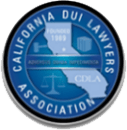PARTIAL LIST OF SCIENTIFIC ARTICLES IN SIMONS LAW LIBRARY
Blood Testing
Blood tests have a number of issues that that are critical in challenging these tests. Among these issues are the proper collection, transportation, and storage of the sample prior to analysis, the effects of the preservative on analysis, the type of sample analyzed, and the method of analysis. Because there are so many methods of analysis, it is not prudent to provide articles on them here, but many good articles on the other issues are listed in this section.
Preservation / Contamination / Storage / Stability “The Stability of Alcohol Content in Samples of Blood and Urine,” Hayden, P; Layden, M; Hickey, M.
146 Irish Journal of Medical Science 48 (1978). “The Stability of Ethanol in Stored Blood Part I. Import- ant Variables and Interpretation of Results,” Brown, G; Neylan, D; Reynolds, W; Smalldon,
- 66 Analytica Chimica Acta 271 (1973).
“The Stability of Ethanol in Stored Blood. Part II: The Mechanism of Ethanol Oxidation,” Smalldon, K; Brown, G. 66 Analytica Chimica Acta 285 (1973).
“The Stability of Ethyl Alcohol in Forensic Blood Specimens,” Chang, R; Smith, W; Walkin, E; Reynolds, P. 8 Journal of Analytical Toxicolo- gy 66 (1984).
“The Stability of Ordinary Blood Alcohol Samples Held Various Periods of Time Under Different Conditions,” Glendening, B; Waugh, T. 10 J Foren Sci 192 (1965).
“Contamination of Blood Specimens for Alcohol Analysis During Collection,” Dubowski, K; Essary, N. Abstracts & Reviews in Alcohol & Driving 4:3 (1983).
Salting Out
“Salting-Out Effect of Sodium Fluoride and Its Influ- ence on the Analysis of Ethanol by Headspace Gas Chromatography,” A. W. Jones 18 (4) Jour- nal of Analytical Toxicology 429-439 (1994).
“Effect of Different Concentrations of Sodium Flu- oride on Blood Alcohol Determination by Headspace Gas Chromatography Using the Internal Standard Method,” Anil A. Solanky, Dianna J. Matthias, Dennis C. Harvey, Dan E. DeFraga 18(1) Journal of Analytical Toxicolo- gy 215-218 (1994).
Plasma / Serum to Whole Blood Ratio
“Comparison of Plasma, Serum, and Whole Blood Ethanol Concentrations,” Charles Winek, Mark Carfagna 11 (2) Journal of Analytical Toxicol- ogy 300-305 (1953).
“Relation Between Serum and Whole-Blood Ethanol Concentrations,” Rainey, P. Clinical Chemistry 39:2288 (1993).
“Serum Alcohol Is Not the Same as Blood Alcohol Concentration,” Kurt, T. Annals of Emergency Medicine 25 (3):430 (1995).
“Distribution of Ethanol: Plasma to Whole Blood Ratios,” Hodgson, B; Shajani, N. Canadian Soci- ety of Forensic Science Journal 18:73 (1985).
Saliva to Whole Blood Ratio
“Correlation of Ethanol Concentration in Blood and Saliva,” McColl, K; Whiting, B; Moore, M; Goldberg, A. 56 Clinical Science 283 (1979).
“Distribution of Ethanol Between Saliva and Blood in Man,” Jones, A. 6 Clin & Exper Pharmacol & Physiol 53 (1979).
“The Comparability of Ethanol Concentrations in Peripheral Blood and Saliva,” Haeckel, R; Bucklitsch, I. Journal of Clinical Chemistry and Clinical Biochemistry 25:199 (1987).

Breath Testing
Breath testing has so many potential issues one almost does not know where to start. Provided below are several general articles that give good overviews of breath testing and the potential problems. Following those are articles that deal with individual topics. Once again, the articles are split between those favorable to the prosecution, those favorable to the defense, and those provided for general information. Some jurisdictions have excluded the blood breath ratio as an issue, but they have not excluded the underlying factors that give rise to the variability in the blood breath ratio, such as breath temperature, breath vol- ume, arterio-venous differences, hematocrit, and mouth alcohol. Whether a particular article on interfering sub- stances is relevant depends on the type of breath testing instrument. Fuel cell instruments will be subject to dif- ferent interfering substances that infra-red instruments, and different frequency infra-red instruments will have different sensitivities to infra-red interfering substances.
General Physiology
“Biological Aspects of Breath-Alcohol Analysis,” Dubowski, K. Clin Chem 20:294 (1974). “Physiological Aspects of Breath-Alcohol Measure-
ment,” Jones, A. Alcohol, Drugs and Driving 6:1 (1990).
“Physiological Errors Associated with Alcohol Breath Testing,” Hlastala, M. Champion 9:16 (1985).
Blood-Breath Ratio
“A Historical and Experimental Study of the Breath/ Blood Alcohol Ratio,” Jones, A; Wright, B;
Jones, T. Year of Conference: 1974 Conference Name: Alcohol, Drugs, and Traffic Safety [Pro- ceedings of Int. Conf.] 6th:509.
“Significance of Variations in Blood:Breath Partition Coefficient of Alcohol,” Alobaidi, T; Hill, D; Payne, J. British Medical Journal 2:1479 (1976). “Statistical Analysis of Blood- to Breath-Alcohol Ratio Data in the Logarithm-Transformed and
Non-Transformed Modes,” Labianca, D; Simpson,
- Eur J Clin Chem Clin Biochem 34:111 (1996). “The Blood/Breath Ratio of Ethanol,” Dubowski, K; O’Neill, B. Clinical Chemistry 25:1144 (1979). “Variability of the Blood/Breath Alcohol Ratio in Drinking Drivers,” Jones, A. Journal of Forensic Science 41(6):916-921 (1996).
“Variability of the Blood- to Breath-Alcohol Ratio and Its Effect on Reported Breath-Alcohol Con- centrations,” Labianca, D; Simpson, G. Eur J Clin Chem Clin Biochem 33:919-925 (1995).
“Variability of the Blood: Breath Alcohol Ratio in Vivo,” Jones, A. J Stud Alcohol 39:1931 (1978).
Mouth Alcohol
“Alcohol Breath Tests: Criterion Times for Avoiding Contamination by ‘Mouth Alcohol,’” Caddy, G; Sobell, M; Sobell, L. Behavior Research Meth- ods & Instrumentation 10:814 (1978).
“Breath-Alcohol Concentration May Not Always Reflect the Concentration of Alcohol in Blood,” Trafford, D; Makin, H. Journal of Analytical Toxicology 18:225 (1994).
“Alcohol Breath Tests: Gross Errors in Current Methods of Measuring Alveolar Gas Concen- trations,” Spector, N. Science 172:57 (1971).
“Ethanol Content of Various Foods and Soft Drinks and Their Potential for Interference with a Breath Alcohol Test,” Logan, B; Distefano, S. Journal of Analytical Toxicology 22:181-183 (1998).
“Mouth Alcohol: Some Theoretical and Practical Considerations,” Denney, R; Williams, P, Alco- hol, Drugs and Traffic Safety, p. 355 (1987).
“The Effect of Dentures and Denture Adhesives on Mouth Alcohol Retention,” Harding, P; McMurray, M; Laessig, R; Simley, D; Correll, P; Tsunehiro, J. Journal of Forensic Sciences 37:999 (1992).
“The Elimination Rate of Mouth Alcohol: Mathe- matical Modeling and Implications in Breath Alcohol Analysis,” Gullberg, R. Journal of Forensic Sciences 37:1363 (1992).
Breath Temperature
“Breath Temperature: An Alabama Perspective,” Carpen- ter, D; Buttram, J. IACT Newsletter 9(2):16 (1998).
“Effect of Hyperthermia on Breath-Alcohol Analy- sis,” Fox, G; Hayward, J. Journal of Forensic Sciences 34:836 (1989).
“Effect of Hypothermia on Breath-Alcohol Analysis,” Fox, G. Hayward, J Journal of Forensic Scienc- es 32:320 (1987).
“Quantitative Measurements of the Alcohol Concen- tration and the Temperature of Breath During a Prolonged Exhalation,” Jones, A. Acta Physiol Scand 114:407 (1982).
“The Effect of Mouth Temperature on Breath Alcohol Concentration,” Wright, B. Journal of Physiolo- gy 163:21 (1962).
“The Influence of Breath Temperature on Assess- ments of Blood Alcohol Level by Breath Analysis,” Legge, D. Quarterly Journal of Stud- ies on Alcohol 26:371 (1965).
Breathing Pattern
“How Breathing Technique Can Influence the Results of Breath-Alcohol Analysis,” Jones, A. Med Sci Law 22:275 (1982).
“The Effects of Hypo- and Hyperventilation on Breath Alcohol Measurements,” Mulder, J; Neuteboom, W. Blutalkohol 24:341 (1987).
Interfering Substances
“Biotransformation of Acetone to Isopropanol Observed in a Motorist Involved in a Sobriety Check (Case Report),” Jones, A; Andersson, L. Journal of Forensic Sciences 40(4):686-687 (1995).
“Diabetes, Breath Acetone and Breathalyzer Accura- cy: A Case Study,” Brick, J. Alcohol, Drugs and Driving 9:27 (1993).
“Diethyl Ether Interference with Infrared Breath Anal- ysis,” Bell, C; Gutowski, S; Young, S; Wells, D. Journal of Analytical Toxicology 16:166 (1992). “Interfering Substances Identified in the Breath of Drinking Drivers with Intoxilyzer 5000S,” Jones, A.W; Andersson, L; Berglund, K. Journal of Analytical Toxicology 20:522 (1996).
“Intoxilyzer Interference by Solvents,” Edwards, M;Giguiere, W; Lewis, D; Baselt, R. Journal of Analytical Toxicology 10:125 (1986).
“Isopropanol Interference with Breath Analysis: A Case Report,” Logan, B; Gullberg, R; Elenbaas,
- Journal of Forensic Sciences 39:1107 (1994). “Observations on the Specificity of Breath-Alcohol Ana- lyzers Used for Clinical and Medicolegal Purposes,”
Jones, A. Journal of Forensic Sciences 34:842 (1989).
Quality Assurance
“Quality Assurance in Breath-Alcohol Analysis,” Dubowski, K. Journal of Analytical Toxicolo- gy 18:306 (1994).
Barometric Pressure
“Breath Alcohol Analysis and its Independence of Atmospheric Pressure,” Labianca, Dominic 17
(2) Journal of Analytical Toxicology 120 (1993). “A Note Upon Barometric Pressure and Breath Alcohol Analysis,” Mason, M.F. 19 Journal of
Forensic Science 325 (1974).
RFI / EMI
“Limited Electromagnetic Interference Testing of Evidential Breath Testers,” National Traffic Highway Safety Administration.
“Alcohol Breath Analyzers and Radio Frequency Interferences,” Llaurado, J. International Jour- nal of Bio-Medical Computing 16:3 (1985).
“Radio Frequency Interference,” Samija, B; Shajani, N: Wong, B. Canadian Society of Forensic Sci- ence Journal 18:211 (1985).
“RFI and Breathalyzers,” Feldman, J; Cohen, H. Cambridge Technical Associates.
“Alcohol Breath Analyzers and Radio Frequency Interferences,” Llaurado, J.International Journal of Bio-Medical Computing 16:3 (1985).
“Effects of Electromagnetic Fields on Evidential Breath Testers,” Adams, J.Institution: National Bureau of Standards — Electromagnetic Fields Division (1981).
Urine Testing
Urine testing is so fraught with potential problems that many jurisdictions have removed it as an acceptable sample. There are significant differences between the alcohol level in the first void compared to a second sample taken 20 to 30 minutes later. There are issues with retained urine, bacterial and yeast contamination, and the blood to urine ratio. Some of the original research was done on dogs or cadavers.
“The Unreliability of Using a Urine Ethanol Concentration to Predict a Blood Ethanol Con- centration,” Winek, C; Murphy, K; Winek, T.Forensic Science International 25:277 (1984).
“The Use of the Urine in the Chemical Test for Intox- ication,” Haggard, H; Greenberg, L; Carroll, R; Miller, D.JAMA 115:1680 (1940).
“The Validity of Urine Alcohol Analysis in Drunk Driv- ers,” Winek, C; Esposito, F.Legal Medicine 1987. “Errors of Converting a Urine Alcohol Value into a Blood Alcohol Level,” Kaye, S; Cardona, E. American
Journal of Clinical Pathology 52:577 (1969). “Ethanol Production in Infected Urine,” Ball, W;
Lightenwalner, M. New England Journal of Medicine 301:614 (1979).
“Observations on Interpretation of Blood Alcohol Levels Derived from Analysis of Urine,” Payne, J; Foster, D; Hill, D; Wood, D. British Medical Journal 3:819 (1967).
“Further Observations on the Validity of Urine Alco- hol Levels in Road Traffic Offenses,” Flanagan, N; Goff, D; Butt, W; Hadlow, A. Medicine, Sci- ence and the Law 17:269 (1977).
“Production of Urinary Ethanol After Sample Collec- tion,” Saady, J; Poklis, A; Dalton, H. Journal of Forensic Sciences 38:1467 (1993).
“The Stability of the Alcohol Concentration in Urine Specimens,” Neuteboom, W; Zweipfenning, P. Journal of Analytical Toxicology 13:141 (1989).
ARTICLES ON ALCOHOL METABOLISM
In many jurisdictions, the offense of driving with a prohibited blood-alcohol level requires proof of the alcohol level at the time of driving based on the alcohol level at the time of the chemical test taken some time later. Other jurisdictions presume that the blood-alcohol level at driving is the same or higher than at the time of the chemical test. In those jurisdictions where the BAC at driving is an issue, often an expert is required to make a prediction of the BAC at that earlier time. This is called Retrograde Extrapolation, and requires considering many factors related to alcohol metabolism. Experts may also render opinions about how many drinks your client had to have in order to achieve his BAC. These calculations also require considering alcohol metabolism. Alcohol metabolism varies from person to person in every respect. This makes the experts’ calculations suspect. Many experts will use an “average” value, without telling you how that “average” was determined, or being able to say that your client is anywhere near “average.” With a little study and understanding, the articles below can be used to exploit and explode these variables and expose retrograde extrapolation for the guessing game it really is.
Time to Peak
“Evaluation of Blood-Ethanol Profiles After Con- sumption of Alcohol Together With a Large Meal,” Jones, A; Neri, A. Canadian Society of Forensic Science Journal 24:165 (1991).
“Peak Blood-Ethanol Concentration and the Time of Its Occurrence After Rapid Drinking on an Empty Stomach,” Jones, A; Jonsson, K; Neri,
- Journal of Forensic Sciences 36:376 (1991). “Food Effects on Absorption and Metabolism of Alcohol,” Sedman, A; Wilkinson, P; Sakmar,
E; Wiedler, D; Wagner, J. Journal of Studies on Alcohol 37:1197 (1976).
Elimination Rate
“Body Temperature Influences on Ethanol Elimination Rate,” Romm, E; Collins, A. Alcohol 4:189 (1987). “Disappearance Rate of Ethanol from the Blood of Human Subjects: Implications in Forensic
Toxicology,” Jones, A. Journal of Forensic Sci- ences 38:104 (1993).
“Elimination of Alcohol from Human Blood,” Wag- ner, J; Wilkinson, P; Sedman, A; Kay, D; Widler, D. Journal of Pharmaceutical Sciences 65:152 (1976).
“Elimination of Ethanol in Humans,” Holzbecher, M., Wells, A. Canadian Society of Forensic Science Journal 17:182 (1984).
Widmark and Retrograde Extrapolation
“Calculation of Blood Alcohol Concentration (BAC) by Sex, Weight, Number of Drinks and Time,” Fisher, H; Simpson, R; Kapur, B. Canadian Journal of Public Health 78:300 (1987).
“Comparing Roadside With Subsequent Breath Alcohol Analyses and Their Relevance to the Issue of Retrograde Extrapolation,” Gullberg, R; McElroy, A. Forensic Science International 57:193 (1992).
“Considering Measurement Variability When Per- forming Retrograde Extrapolation of Breath Alcohol Results,” Gullberg, R. Journal of Ana- lytical Toxicology 18:126 (1994).
“Problems and Pitfalls with Back-tracking BAC to the Time of Driving,” Jones, A, DWI Journal of Law & Science 3(6):8 (1988).
Endogenous Alcohol
“Can Miroorganisms Produce Alcohol in Body Cav- ities of a Living Person?: A Case Report,” Moriya, F; Ishizu, H. Journal of Forensic Sci- ences 39:883 (1994).
“Endogenous Production of Alcohol in Humans,” Davies, J. Journal of Forensic Science Society 25:299 (1985).
“Intragastrointestinal Alcohol Fermentation Syn- drome: Report of Two Cases and Review of the Literature,” Kaji, H; Asanuma, Y; Yahara, O; Shibue, H; Hisamura, M; Saito, N; Kawakami, Y; Murao, M. Journal of the Forensic Science Society 24:461 (1984).
ARTICLES ON ALCOHOL IMPAIRMENT
Some jurisdictions criminalize impaired driving, others driving with a prohibited BAC, and some criminalize both. Often it becomes necessary to demonstrate that your client was not too impaired to drive as safely as the law requires. One strategy is to disconnect impair- ment from BAC because people are impaired to different extents by the same amount of alcohol, due to tolerance and individual variability. Also, impairment in some areas does not imply impairment in others, or that the “impairment” observed on field sobriety tests translates into impairment for driving. The articles below will help the practitioner understand alcohol impairment, driving impairment, and the weaknesses in field sobriety testing.
“Effects of Low Doses of Alcohol on Driving-Related Skills: A Review of the Evidence,” Moskowitz, H; Robinson, C. Institution: NHTSA.
“A Review of the Literature on the Effects of Low Doses of Alcohol on Driving Related Skills,” Moskowitz, H., Fiorentino, D. NHTSA DOT HS 809 028 (2000).
“Variability in Behavioral Impairment Involved in the Rising and Falling BAC Curve,” Nichol- son, M; Wang, M; Airhihenbuwa, C; Mahone, B; Christina, R; Maney, D. Journal of Studies on Alcohol 53:349 (1992).
“Driver Characteristics and Impairment at Various BAC’s,” Moskowitz, H., Burns, M., Fiorenti- no, D., Smiley, A., Zador, P. NHTSA DOT HS 809 075 (2000).
“Detection of DWI at BAC’s Below 0.10,” Stuster, J. NHTSA DOT HS 808 654 (1997).
Field Sobriety Testing
NHTSA Development and Validation Studies “Psy- chophysical Tests for DWI Arrest (Final Report),” Burns, M; Moskowitz, H. NHTSA DOT HS 802 424 (1977).
“Development and Field Test of Psychophysical Tests for DWI Arrest,” Tharp, V; Burns, M; Moskow- itz, H. NHTSA DOT HS 805 864 (1981).
“Field Evaluation of a Behavioral Test Battery for DWI,” Anderson, T; Schweitz, R; Snyder, M. NHTSA DOT HS 806 475 (1983).
“A Colorado Validation Study of the Standardized Field Sobriety Test (SFST) Battery,” Burns, M., Anderson, E. Colorado Department of Trans- portation (1995).
“A Florida Validation Study of the Standardized Field Sobriety Test (SFST) Battery,” Burns, M., Dioqui- no, T. Florida Department of Transportation (1998).
“Validation of the Standardized Field Sobriety Test Battery at BACs Below 0.10 Percent,” Shuster, J., Burns, M. NHTSA DOT HS 808 839 (1998).
“Development of a Standardized Field Sobriety Test (SFST) Training Management System,” Stuster, J. NHTSA DOT HS 809 400 (2001).
Student and Instructor Manuals
“DWI Detection and Standardized Field Sobriety Testing — Student Manual,” US Department of Transportation — NHTSA HS 178 R9/04 (2004).
“DWI Detection and Standardized Field Sobriety Testing — Instructor Manual,” US
Department of Transportation — NHTSA HS 178 R9/04 (2004).
Nystagmus
“Different Types of Alcohol Nystagmus,” Aschan, G.Acta Otolaryngol 140:69 (1957).
“Effect of Cogeners in Alcoholic Beverages on the Incidence of Nystagmus,” Murphree, H; Price, L; Greenberg, L. Quarterly Journal of Studies on Alcohol 27:201 (1966).
“Gaze Nystagmus and Blood Alcohol,” Coding, G; Dobie, R. Laryngoscope 96:713 (1986).
“The Correlation of Angle of Onset of Nystagmus with Blood Alcohol Level,” Norris, J. Journal of the Forensic Science Society 25:476 (1985).
“The Effect of Blood Alcohol Concentration on the Onset of Gaze Nystagmus,” Lehti, H. Blutalko- hol 13:411 (1976).
Criticisms Of Field Sobriety Testing
“Statistical Evaluation of Standardized Field Sobriety Tests,” Hlastala, M; Polissar, N; Oberman, S Journal of Forensic Sciences 50:1 (2005).
“Field Sobriety Tests: Are They Designed for Fail- ure?,” Cole, S., Nowaczyk, R. Perceptual and Motor Skills 79:99 (1994).
Crash Risk and Driving
“The Role of the Drinking Driver in Traffic Acci- dents,” Borkenstein, R., Crowther, R., Shumate, R., Ziel, W., Zylman, R. Indiana University (1964).
“Crash Risk of Alcohol Impaired Driving,” Blomberg, R., Peck, R., Moskowitz, H., Burns, M., Fioren- tino, D. Dunlap and Associates (2005).
Tolerance
“Carryover of Tolerance to Alcohol in Moderate Drinkers,” Benton, R; Banks, W; Vogler, R. Journal of Studies on Alcohol 43:1137 (1982). “Concentration Tolerance and the Influence of Alco- hol,” Author; Simpson, G. Journal of Analytical
Toxicology 15:47 (1991).
“Individual Differences in Sensitivity and Tolerance to Alcohol,” Wilson, J; Plomin, R. Social Biol- ogy 32:163 (1986).
“Tolerance at High Blood Alcohol Concentrations,” Perper, J; Twerski, A; Wienand, J. Journal of Forensic Sciences 31:212 (1986).
“Tolerance to the Effects of Alcohol,” Chesher, G; Greeley, J. Alcohol Drugs and Driving 8:93 (1992).
Professional Reference Services (see Appendix A) in Minneapolis, Minnesota has a complete library of scientific literature related to drunk driving cases. Give them a call and they will fax you a list of what’s available.
General Sources on Forensic Science
Some sources on the subject of scientific evidence in general are:
- Black, Bert, and Lee, Patrick W., Expert Evidence (St.Paul, MN: West Group, 1998).
- Dubowski, Kurt, “Stages of Acute Alcoholic Influ- ence/Intoxication in Nontolerant Individuals,” American Journal of Clinical Pathology, 1980,
- 74, pp. 749—It has been reproduced in many medical text books including Medical Toxicology by Matthew J. Ellenhorn and Donald G. Barceloux (published by Elsevier).
- Eckert, William G., M.D., Introduction to Forensic Sciences, 2d ed. (Boca Raton, FL: CRC Press, 1997)—“A volume in the Forensic Library series.” Faigman, David L., Legal Alchemy: The Use and Misuse of Science in the Law (New York: W.H.
- Freeman & Co., 1999).
- Faigman, David L., et al., Modern Scientific Evidence
- (St. Paul, MN: West Group, 1997).
- Foster, Kenneth R., and Huber, Peter W., Judging Science: Scientific Knowledge and the Federal Courts (Cambridge, MA: M.I.T. Press 1999).
- Foster, Kenneth R. (editor), et al., Phantom Risk: Sci- entific Inference and the Law (Cambridge, MA:
- M.I.T. Press 1993).
- Giannelli, Paul C., and Imwinkelried, Edward J., Sci- entific Evidence, 3d ed. (Charlottesville, VA: The Michie Company, 1999).
- Huber, Peter W., Galileo’s Revenge: Junk Science in the Courtroom (New York: Basic Books, 1991). Imwinkelried, Edward J., ‘Bases’ of Expert Testi- mony: The Syllogistic Structure of Scientific
- Testimony (1988) 67 N.C.L.Rev. 1.
- Imwinkelried, Edward J., The Methods of Attacking Scientific Evidence, 3d ed. (Charlottesville, VA: The Michie Company, 1997).
- Imwinkelried, Edward J., “Recent Developments in Forensic Science: The Good News,” the Cham- pion, XII No. 10, Dec. 1988 (Washington D.C.: N.A.C.D.L.) 14.
- Jackson, Andrew R.W., and Jackson, Julie M., Foren- sic Science, 2d Edition, Prentice Hall (2007).
- James, Stuart H, and Nordby, Jon J., Forensic Science: An Introduction to Scientific and Investigative Techniques, 2d Ed. CRC Press (2005).
- Kruglick, Kim, “A Beginner’s Primer on the Inves- tigation of Scientific Evidence,” California
- Lee, Henry C., Gaensslen, Robert E., and Harris, Howard, Introduction to Forensic Science and Criminalistics, 1st Ed., McGraw-Hill, (2007).
- Saferstein, Richard, Ph.D., Editor, Forensic Science Handbook, 2d Ed. (Upper Saddle River, NJ: Prentice-Hall, 2002 [sic])—Chapter 1 on expert witnesses was written by forensic science con- sultant and attorney Gil Sapir.
- Seminar materials for any C.P.D.A. Scientific Evidence seminar.
- Siegel, Jay A., Saukko, Pukka J., Knupfer, Geoffrey C., Encyclopedia of Forensic Sciences (Orlan- do, FL: Academic Press, 2000).
- Wecht, Cyril H., M.D., J.D., et al., Forensic Sciences (New York: Matthew Bender, 1998)—Five-volume set.
- Sources on Alcohol Testing Science: Some sources on the subject of analyzing body samples for alcohol content are: American Prosecutor’s Research Inst., National Traffic Law Center, “Toxicology and Forensic Analysis of Alcohol,” Prosecution of Driving While Under the Influence (Washington, D.C.:
- U.S. Department of Transportation, NHTSA, 1999)—Send a fax to order (see Appendix A, “NHTSA, U.S. Department of Transportation”). Bartell, Donald J., and Imobersteg, Anne D., Attack- ing and Defending Drunk Driving Tests, 1st Ed.
- (Costa Mesa, CA: James Publishing, 2007).
- Breath Alcohol Determinations (Willits, CA: Fast Eddie Publishing Company, 1994), 6.5 hour California M.C.L.E. credit videotape of seminar with syllabus presented on March 12, 1994, by William Giguiere, M.A. and Samuel G. Benson, M.D., Ph.D. and their Park-Gilman Clinics.
- Dubowski, Kurt M., The Technology of Breath Alco- hol Analysis (Rockville, Maryland: Dept. of Health & Human Services (DHHS)) Publication No. (ADM)92-1728.
- Fitzgerald, Edward F., Intoxication Test Evidence, 2d ed. (St. Paul, MN: West Group, 1995).
- Garriott, James C., Medical-Legal Aspects of Alco- hol, 4th Ed. (Tucson, AZ: Lawyers and Judges Publishing Co., 2003). This text contains chapters by A.W. Jones, K. Dubowski, and William Head, among others. It is a standard reference for alcohol toxicologists and gives a good depth of treatment to the breadth of scientific issues.
- Giannelli, Paul C., and Imwinkelried, Edward J., Sci- entific Evidence, 3d ed. (Charlottesville, VA: The Michie Company, 1999), Chap. 22.
- Giguiere, William, “Alcohol Testing, Demonstration of Blood Collection, Breath Testing, PAS, etc.,” lecture in Test Evidence and DUI Laws—1995 (Willits, CA: Fast Eddie Publishing Compa- ny, 1995), 6.5 hour California M.C.L.E. credit videotape of seminar with syllabus presented on June 3, 1995, by William Giguiere, M.A., and Samuel G. Benson, M.D., Ph.D. and their Park-Gilman Clinics.
- Holleyhead, R., A Bibliography On Ethyl Alcohol For Forensic Science And Medicine And The Law (Har- rogate, England: The Forensic Science Society).
- Jones, A. W., “Measuring Alcohol in Blood and Breath for Forensic Purposes—A Historical Review,” Foren- sic Science Review, June 1996, Vol. 8, No. 1, p.14.
- Karch, Steven B., Forensic Issues in Alcohol Testing, (New York: CRC Press, 2007).
- Niesink, Raymond, J.M., de Vries, John, and Hollinger, Mannfred A., eds., Toxicology, Principles and Applications (Boca Raton, FL: CRC Press, 1996).







